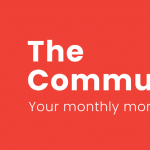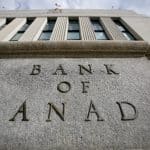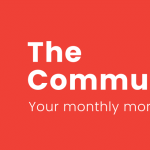OTTAWA — The Bank of Canada acknowledges that lower-than-anticipated oil prices “will weigh” on the economy, but policymakers are sticking to their hope for a “broadening recovery.” That may be an elusive quest if the other major weight on Canadian growth — a massive load of household debt —continues to climb higher.

“I definitely think it’s a big risk to the economy, going forward,” said David Madani, an economist at Capital Economics, referring to consumers’ borrowing habit for home buying.
“We think the housing market, from an evaluations point of view, is very stretched. We think evaluations have over shot fundamentals,” he said.
“We do see signs of overbuilding in new construction. So, even as the new supply of housing has risen, we’ve also seen a run-up in prices — which is very typical of what you would see in a housing bubble.”
As well, Mr. Madani said “this is all accompanied by record-high household debt.”

On Wednesday, a new report showed Canadians collectively piled on more than $1.5 trillion in debt in the third quarter of this year, up 7.4% from $1.4 trillion for the same period a year earlier.
Two-thirds of the total debt, or $985.1 billion, can be found in mortgages, according to Equifax Canada. Stripping out mortgages, Canadians on average owed $20,891.
“Of course, [the housing market] has been a positive factor for growth of the past few years. But I think we’re pushing our luck now,” said Mr. Madini.
“So, when rates eventually go up, that would be a huge hit to housing affordability and, therefore, home sales. And if home sales fall, then the market price for housing goes down. This could slow household spending, which is the bulk of the economy,” he said.
“We don’t expect a slow landing in the housing market. We think it will be a hard landing.”
The central bank, led by governor Stephen Poloz, on Wednesday kept is trendsetting interest rate at 1%, where it has idled since September 2010 — the longest pause since the early 1950s. Most economists don’t expect Canadian borrowing costs to begin rising again until mid-2015 or later, and not until after the U.S. Federal Reserve tips its rate hand.
Inflation, which is bank’s key policy target, “has risen by more than expected,” policymakers said Wednesday. But they blamed that mainly on temporary factors — such as the weaker Canadian dollar and higher telecommunications and meat prices.
Overall inflation rose by an annual rate of 2.4% in October, up from 2% the previous month. The core inflation reading — which strips out many key volatile items, such as some energy and food products — rose 2.3% in October. Policymakers aim to hit a 2% inflation target, the midway point of their 1%-to-3% comfort zone.
Meanwhile, the central bank said economy is showing signs of a broadening recovery,” with Canada benefitting from a “clearly strengthened” U.S. economy.
“Stronger exports are beginning to be reflected in increased business investment and employment,” it said in it statement. “This suggests that the hoped-for sequence of rebuilding that will lead to balanced and self-sustaining growth may finally have begun.”
The bank also noted that falling prices for oil and other commodities “will weigh on the Canadian economy.”
But bank watchers honed in on another critical factor that can have a major impact on the health of the economy.
Nestled near the bottom of their usually brief interest rate statement — Wednesday’s was just 331 words — was one line on consumer debt: “Household imbalances, meanwhile, present a significant risk to financial stability.”
Short but still drawing a lot of attention, given the Oct. 22 rate statement contained a less-heated phrase: “The financial stability risks associated with household imbalances are edging higher.”
Derek Holt, at Scotiabank Economics, said the wording “is a bit more severe than the normal tone that the BoC has taken under governor [Mr.] Poloz.”
“We think that the argument that households are overleveraged and home prices are too high at this point in the game means that policymakers have to be very careful in avoiding moves that would add to the risk of a hard landing as opposed to a more gradual deleveraging from current levels.”

Gordon Isfeld | December 3, 2014 10:30 AM ET
More from Gordon Isfeld












